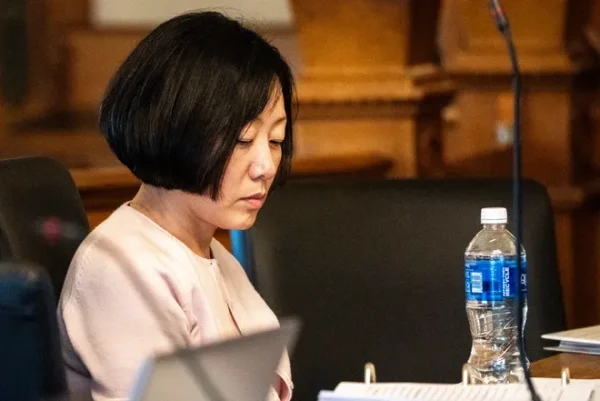Financial aid will not adjust with lowest tuition increase in six years
February 6, 2008
On Jan. 25, the board of trustees and administration approved a 5 percent tuition increase at Simpson.
The increase, which is one whole percentage point down from last year’s 6 percent increase, starts a new wave of low increases over the next few years. During the 2008-09 school years, the cost of attending Simpson will be a total of $31,759. Broken down, tuition will be $24,414, room and board $3,354 and a 12 or 20 flex meal plan is estimated to cost $3,634.
Despite the fact that the increase is the lowest in years, one change in the tuition billing process will negatively affect many students. Starting next year, financial aid will not be increasing like it has in the past for previous students.
Freshman Cherie Rotert, a full-time student who is responsible for her own tuition, was sad to hear of the change, but feels the administration is doing what they have to do in order to save money.
“I have to rely on myself to cover those expenses and more than likely that will require taking out more money,” Rotert said. “Any amount of money I receive that I don’t have to worry about paying back helps, but not getting anymore than I did this year is rather depressing.”
Jim Thorius, vice president of student development and dean of students, is happy to see that this is the lowest increase the college has seen in more than six years. Thorius has been working closely with administration and President John Byrd on the budget and seeing where the college can save money.
“One of the things President Byrd is trying to do is try to develop a financial model that would allow us to keep tuition increases as small as possible,” Thorius said. “And that’s clearly what we have done this year.”
Along with the increase, all members of the administration have had to review their budgets to see where money can be saved and where the college can be more energy efficient. Also, the college has been looking at how to maintain and hire new faculty members in a plan that hopes to add two new faculty members in psychology and the sciences next year.
“This is something that happens at probably every institution, not just colleges,” Thorius said. “But every place has to look at their budgets and how they generate their funds for the next year. I think in that sense, its normal.”
Rotert understands why administration has to increase tuition, but would like to see the campus put more effort into becoming more energy efficient.
“I believe the school’s biggest issue with energy proficiency is the lack of information provided to the students about the average cost of the energy bill each year,” Rotert said. “If students knew the cost of tuition was going to go up each year partially due to energy, I believe they’d take the necessary steps to lower the cost; I know I would.”
As for energy efficiency, Thorius mentioned that after the remodeling of the Washington and Colonial apartments on the east side of campus, an energy audit showed that water usage in those two buildings has gone down by as much as 40 percent. He feels that strides like this will help everyone at the college become “better stewards with energy.”
From an admissions standpoint, counselors are given the task to sell the college to prospective students no matter what the cost. As part of their strategy, admissions counselors often mention financial aid when speaking with prospective students about the price to attend Simpson.
“I definitely see that Simpson always has to do a good job of maintaining an order to keep current students happy and prospective students happy,” Beth Peck, assistant director of admissions, said.
Peck said that prospective students and their parents are more concerned with the current price of the college rather than the prices in the past.
“Administration has to have the resources to hire the best faculty, retain the best faculty and do the campus upgrades that they do and that all takes money,” Peck said.
Since Simpson is competing with other private and state schools in the Midwest, competition is high. Their goal is to put forth the best financial aid package possible to prospective students.
Director of Recruitment Cole Zimmerman also mentioned implementing options of financial aid to prospective students and their parents is a very important part of the process, especially since the majority of current Simpson students do receive financial aid.
“The majority of parents and their students are much more savvy these days as far as financial aid is concerned,” Zimmerman said. “They all know that it’s out there and that it varies in degree.”
As for financial aid, the college does work with students on an individual basis to get them the money they need to pay for school.
“We are trying to be the best stewards possible of the money that comes into the institution and 100 percent of the money that comes in from tuition gets plowed back into the college to provide quality experience that we can give for the students here,” Thorius said. “That’s our commitment and that’s our goal.”












